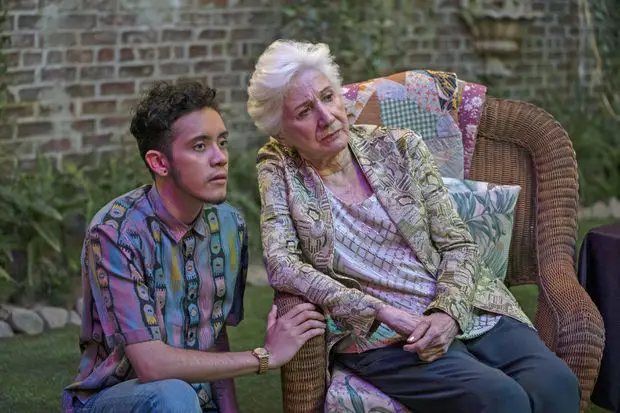A reboot of the beloved “Tales of The City,” originally a miniseries from the ’90s based off of the novels by Armistead Maupin, has been long overdue. The show originated from a newspaper column that Maupin was writing in 1976; it followed the lives of many different fictional characters that quickly blossomed into what felt like lifetime friends for the reader. From the column alone, readers were hooked on seeing this nonbiological but lovingly-connected family that was based on inclusion, unconditional love and acceptance. The television show met its end after being brought down by the politics and anti-gay rhetoric of the time. The series portrayed the LGBTQ community in an authentic and honest way, which many dismissed as “gay propaganda.”
Now, the world is hungry and ready to dive back into this diverse, queer family, especially with Pride Month underway. The reboot follows a group of queer individuals living in San Francisco at an iconic apartment complex named 28 Barbary Lane. The characters reflect a wide range of identities on the LGBTQ spectrum and are racially diverse as well. The LGBTQ history of San Francisco seems to be a character in itself on the show.
San Francisco acts as a bridge for the generation gaps between the characters. Some were involved with Compton’s Cafeteria riot and the AIDS crisis, while others are among the new millennium of queer people, who focus on the importance of labels and representation of the LGBTQ community on social media.
Their residence exists as a safe haven and eternal home for all the characters in the show. It was originally owned by Anna Madrigal, who is transgender. When the audience first meets her, she is celebrating her 90th birthday at the house in which she has spent most of her life.
Anna seems to be an all-knowing maternal figure for the rest of the characters, with wisdom sprouting from her like a seed. On the show, she is threatened and tormented by her own past — a past that she keeps hidden from her chosen family. Much of the guilt from her past stems from a place of privilege that she had been granted. She’s carried the weight of regret — of failing to give back as much as she could to the LGBTQ community, of not being an advocate for liberation alongside her peers — her entire life.
“Tales of The City” highlights what community really means to queer individuals who have been abandoned by their biological families. The show conveys that, even in the face of hate and adversity, the LGBTQ community creates their own safe spaces, which become families that can’t be destroyed by anything. “Tales of the City” even explores the ways in which the characters interact with their biological family in comparison to their chosen family at 28 Barbary Lane.
Mary Ann Singleton was an original cast member from the ’90s version of “Tales of the City” and returns for Anna Madrigal’s 90th birthday in the revival. The show left off with Mary Ann leaving her chosen family behind to jump start her career. Her daughter, Shawna, is in the process of finding her own identity with the return of her absent mother as feelings of abandonment rise to the surface.
When Mary Ann comes back into the picture and attempts to forge a relationship with her daughter, she tries to exempt herself from any guilt for not being in her life, as Shawna isn’t her biological daughter — she was adopted.
The fact that Shawna is adopted has been kept and hidden from her, and, once she finds out, she goes on a journey to get to know her biological family. As she learns about them, she feels progressively more disconnected. There is a scene in which she describes the emotions of coming to terms with what family really means.
“The guy who I thought was my dad for 25 years is not my dad,” she said. “Then I find out that my biological mother is a stranger, dead and a flight attendant. I went to meet her brother and he’s great. His whole family is great, but we have absolutely nothing in common. I mean, they were showing me my mother’s yearbook and I kept saying in my head, like, this is your family.”
Shawna comes to terms with the fact that family is not defined just by blood, but rather by people who love and understand who you are. Family can be picked and woven together harmoniously; family members are the people who look out for you, pick you up when you fall and give you unconditional love. “Tales of the City” explores the ways in which queer individuals who come from broken homes and past trauma decide to be fully present and help one another.
“Tales of the City” explains how a chosen family is cherished in the LGBTQ community, as it is an inclusive space. Each character goes on through their own personal trials, yet they are always there to hold each other up. Something beautiful arises when two different generations of the LGBTQ community stand alongside one another in a city like San Francisco, which has such a significant history of queer activism.
The author of the original book series believes that the new reboot of “Tales of the City” is important because of “the sense that we can create our own families when our traditional families fail us.”
















